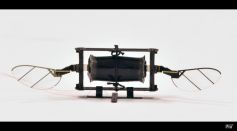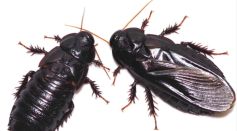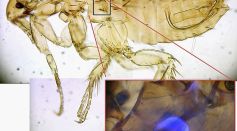Tags: Insects
Giant Sea Anemone Also Eats Ants, Spiders: How Did These Insects Reach the Sea?
Enormous Australian Wood Moth With 25cm Wings is Very Heavy, It Struggles to Fly
Indian Jumping Ants Shrink, Regrow Their Brains to Become Queen of the Colony
New Firefly Species Found in Singapore Freshwater Swamp; First Discovery Since 1909
Researchers Discover Secret Behind Whiteflies’ Invincibility: A Stolen Plant Gene

Brood X Cicadas Are Crawling Out of the Ground Sooner Than Expected

Drones as Small as Insects Could Operate in Life-and-Death Situations
Like Humans, Moths Prefer Dim Red Light for a Romantic Night

Home Gardens Considered Powerhouse for Pollinating Insects

These Cockroaches Practices Mutual Cannibalism Post-Coital Bliss
Dragonflies Perform Somersaults to Return to an Upright Stance
Expect Trillions of Brood X Cicada To Invade the US After Hibernation For 17 Years
On Making Flapping Drones: Understanding How Butterflies Fly Will Be Helpful
Scientists Just Discovered the Sisters of the Fleas
New Study Shows How Beetles Keep Rivals Off to Feed Their Future Offspring
New Study Sheds Light on the Reproductive Lives of Honey Bees
Insects from All Over the Globe are Vanishing at Alarming Rates ---But it isn't too Late
New Study of Eurasian Eagle Owl Diet Reveals Threatened Giant Bush-Crickets

New Study Reveals Large Bumblebees Learn the Best Flowers’ Spots

Study of Flea Genetics Points their Position on Tree of Life and Closest Relatives
Most Popular

Hellfire Missile Video Reveals MQ-9 Reapers Being Used for Aerial Combat

Is the iPhone Air Eco-Friendly? Environmental Trade-Offs Explained

FDA Approves New Hypertension Notification Feature With Apple's WatchOS 26

Tesla Cybertruck Crashes Anti-ICE Protests in LA, Becomes Unlikely Symbol of Trump Controversy




